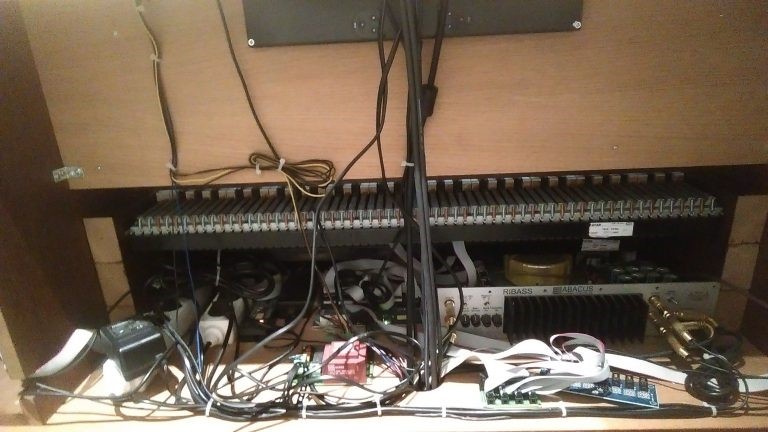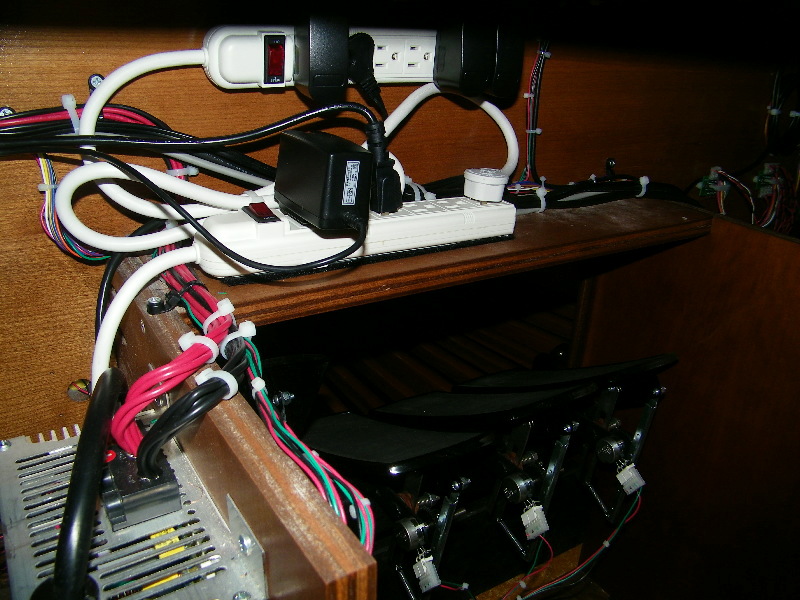Most digital organs today include dedicated hardware-based tone generation. This approach allows for superior sound quality, as well as greater reliability and longer-term product viability.
PCs can also produce organ sounds. However, while PC-based tone generation offers cost benefits to suppliers, it includes compromises and support issues that are detrimental for consumers.
Organs with PC tone generation are referred to as “virtual organs” and are often created by small builders or hobbyists who purchase components from different suppliers to create low-cost solutions. Ultimately, these PC-based organ solutions offer little savings to consumers.
One small company that markets PC-based based organs in Europe is Noorlander. Below is a photograph the inside of a Noorlander organ. While quality varies significantly from organ builder to builder, this photo demonstrates a quality level that is unacceptable at any price. Consumers need to look in the inside the organ to understand its true quality.

